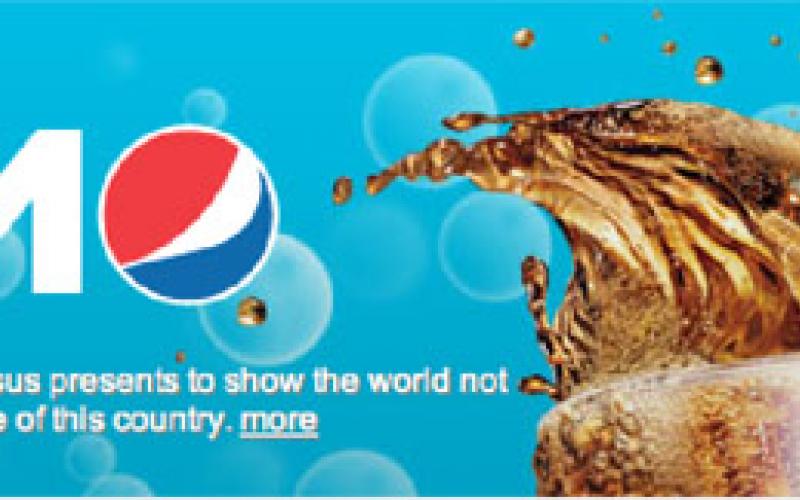Resources
Case Study: Multicultural
Food and beverage companies covet multicultural youth as an important customer segment to target, even describing Hispanics as “the most important U.S. demographic growth driver in the food, beverage and restaurant sectors.”1 Latino and African-American youth are in the forefront of adopting new media devices, and their substantial online activity and digital trend-setting behaviors have opened up new channels for marketers to bypass parents and reach them directly. Research has also found that young people from communities of color are more receptive to advertising messages and are more brand conscious than white youth. Unfortunately, food and beverage marketers target these young people with some of the least healthful products on the market. This has serious consequences for their health, as obesity rates are higher among Latino and African-American children and adolescents than among their white counterparts.2
“Connected black teens” are “tech savvy, heavily social, music-oriented, brand conscious, impetuous in their spending … most likely to want to try new technologies … use an iPod, do a host of social and/or entertainment activities on the Internet, [and] use a digital camera. … [T]his segment is the most likely to say that ‘if they see something they like, they have to have it.’
Techniques:
Creating immersive environments
McDonald’s created the site McCafé to get Hispanics to “experience McCafe’s coffees with their five senses” by using various digital technologies. The interactive site encourages customers to use their webcam, microphone and headphones. Users can also upload pictures, view MCafé commercials in Spanish, and listen to audio of coffee being prepared, steamed, poured and consumed, all while playing tropical Latin American music that repeats “Café…caliente…Cafe…sabroso” (Coffee…hot…Coffee…delicious.)4
Infiltrating social networks
Because marketers know that Hispanics and African-Americans are more likely than white consumers to befriend brands and share opinions on social networking sites, many campaigns actively encourage these behaviors. For example, Dr Peppers’ Vida 23 campaign encouraged young Latinos to take personal photos of themselves holding Dr Pepper products and share the pictures with friends through FlickR. The campaign website also features a branded Twitter feed, which says that young people should take “flavor to the next level” with Dr Pepper.5
Location-based and mobile marketing
McDonald’s used its 365Black.com site, which targets African-Americans, in a mobile marketing “favorite burger” contest. To personalize the experience, the “Flavor Battle” encouraged audience members at the “Sprite Step Off” event to “vote for their favorite McDonald’s burger and DJ via text message.” Each text message and each vote on 365Black.com counted as an entry into McDonald’s national Flavor Battle sweepstakes.6 The fast feeder has also used text messaging to target the Hispanic community and offer free products such as McCafé Mochas.7
Collecting personal data
Requiring registration to company websites and penetrating social networks are two of the main ways that marketers amass personal information on current and prospective consumers. For example, General Mill’s Que Rica Vida website provides information and recipes for many of its brands. However, to receive coupons for such products, users have to register and provide General Mills with their name, email address, street address, date of birth and the name of the store where they buy groceries.8 With that information, the site can tailor coupon offerings to specific users.
Studying and triggering the subconscious
Multicultural groups are often placed under the neuromarketing lens. For example, the Advertising Research Foundation, the ad industry’s leading research organization, has focused on helping its members engage in what it refers to as “emotion marketing” to target ethnic groups and drive purchasing behavior based on subconscious emotions rather than conscious decision-making.9,10
References:
1. Piotrowski, F., and Zweig, M. (2010, March). Multicultural Merchandising Opportunities within CPG. Retrieved October 12, 2011 from http://thearf-org-aux-assets.s3.amazonaws.com/downloads/rethink-10/mon/kif/4/2010_Rethink_D1_WS_Piotrowski-Zweig_v03.pdf.
2. Ogden, C.L., Carroll, M.D., and Flegal, K.M. (2008). High Body Mass Index for Age among US Children and Adolescents, 2003-2006. JAMA: The Journal of the American Medical Association, 299(20), 2401-05.
3. Yankelovich. (2008, June). Black America Today: The Future, The Past, The Present. Retrieved from http://blackamericastudy.com/summary/AA-Presentation-Public-Deck-3.pdf.
4. McCafé. http://www.meencanta.com/mccafe/
5. Dr Pepper. Vive la Vida 23. http://es.drpepper.com/promotions/vida23/
6. Tsirulnik, G. (2009, September 9). McDonald’s Uses Mobile to Provide Instant Gratification to Young Consumers. Mobile Marketer. Retrieved August 22, 2010 from http://www.mobilemarketer.com/cms/news/messaging/4129.html.
7. Portada. (2009, August 10). Sales Leads: Boost Mobile, McDonald’s, Tecata, Sega – Wii, Amway, Lifestyle Lift…. . Retrieved August 22, 2010 from http://www.portada-online.com/article.aspx?aid=5359.
8. Que Rica Vida. Regístrate. Retrieved August 22, 1010 from https://www.quericavida.com/Cuenta/Registro.aspx.
9. Chao, E. (2010, September 28). Emotion Marketing — Opportunities for Multicultural America. Advertising Research Foundation and Emotion Mining Company. Available from http://www.thearf.org/ (membership required).
10. Advertising Research Foundation. (2010, September 28). The New Mainstream: Using Human Emotion to Foster Business Growth. Available from http://www.thearf.org/ (membership required).







